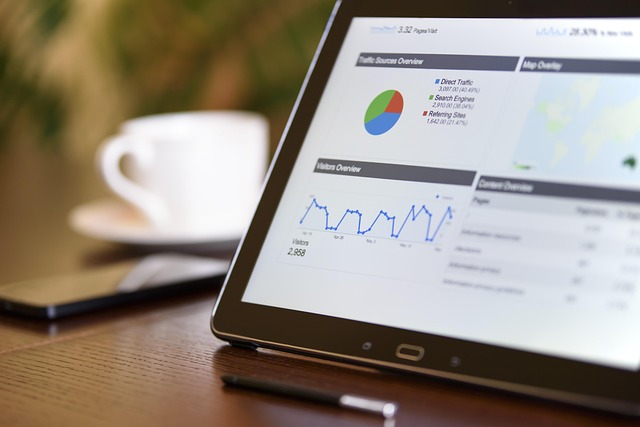AI is transforming sales forecasting and inventory management in industries like food retail, offering AI early warning systems for food spoilage that optimize operations. By analyzing historical data, market trends, and customer behavior, AI algorithms provide dynamic insights tailored to product lifecycles, enabling just-in-time stock ordering. This technology reduces waste, minimizes environmental impact, enhances freshness, and improves customer satisfaction. Implementing AI sales forecasting involves identifying specific needs, preparing data, selecting suitable models (like regression or LSTM networks), rigorous testing, integration into existing systems, and regular monitoring for adaptability to market changes.
“Revolutionize your business with AI business sales forecasting solutions. This article explores how artificial intelligence (AI) is transforming sales forecasting, offering unprecedented accuracy and insights. We delve into its benefits, from enhancing productivity to reducing costs. Furthermore, we focus on the significant impact of AI early warning systems in minimizing food spoilage—a critical aspect for retailers and manufacturers. By implementing these cutting-edge solutions, businesses can navigate market complexities with confidence.”
- Understanding AI's Role in Sales Forecasting and Its Benefits for Businesses
- The Impact of AI Early Warning Systems on Reducing Food Spoilage
- Implementing AI Solutions: A Step-by-Step Guide for Effective Sales Forecasting
Understanding AI's Role in Sales Forecasting and Its Benefits for Businesses

Artificial Intelligence (AI) is transforming the way businesses approach sales forecasting, offering unprecedented accuracy and insights. By leveraging machine learning algorithms, AI can analyze vast amounts of historical data, market trends, and customer behavior to predict future sales with remarkable precision. This capability is especially valuable in industries like food retail, where managing inventory and minimizing waste are critical.
One of the key benefits of AI in sales forecasting is its ability to provide early warning systems for potential issues, such as food spoilage. By monitoring sales patterns and product lifecycles, AI algorithms can identify trends that indicate when stock should be replenished or products retired, helping businesses optimize their inventory and reduce waste. This not only saves costs but also contributes to a more sustainable and environmentally conscious operation.
The Impact of AI Early Warning Systems on Reducing Food Spoilage

AI early warning systems are transforming the way businesses, particularly in the retail and hospitality sectors, manage perishable goods. By leveraging machine learning algorithms to analyze historical sales data, consumer trends, and product shelf life, these systems can predict with remarkable accuracy when stock levels will peak and start to decline. This predictive capability is crucial in reducing food spoilage, a significant global issue that results in immense waste and financial losses for businesses.
Traditional inventory management methods often rely on static planning and historical data, which can lead to overstocking or understocking. AI early warning systems, however, provide dynamic insights tailored to each product’s unique behavior. They detect subtle patterns and trends, enabling businesses to adjust their orders promptly. This proactive approach ensures that products are purchased and stocked just in time, minimizing the risk of spoilage and maximizing freshness, thus enhancing customer satisfaction and reducing environmental impact.
Implementing AI Solutions: A Step-by-Step Guide for Effective Sales Forecasting

Implementing AI solutions for sales forecasting is a strategic move that can transform your business’s predictive capabilities. Here’s a step-by-step guide to help you navigate this process effectively:
1. Define Your Forecasting Needs: Start by identifying the specific areas where AI can provide an edge, such as predicting demand patterns, optimizing inventory levels, or enhancing price elasticity. For instance, consider using AI early warning systems for food spoilage to minimize waste and improve supply chain efficiency.
2. Gather and Prepare Data: Collect historical sales data, market trends, and relevant external factors. Ensure the data is clean, structured, and representative of your operations. This step involves data preprocessing, which includes handling missing values, outliers, and categorizing variables for effective modeling.
3. Choose the Right AI Model: Select an appropriate machine learning algorithm based on your data characteristics and forecasting objectives. Regression models, time series analysis, or deep learning architectures like LSTM (Long Short-Term Memory) networks are commonly used for sales forecasting. Each model has its strengths, so understanding their nuances is key.
4. Train and Test the Model: Split your prepared dataset into training and validation sets. Train the chosen AI model using historical data, allowing it to learn patterns and relationships. Evaluate its performance using metrics like Mean Absolute Error (MAE) or Root Mean Squared Error (RMSE). Cross-validation techniques can provide a more robust estimate of model accuracy.
5. Integration and Deployment: Once satisfied with the model’s performance, integrate it into your sales operations. Develop an interface or dashboard to visualize forecasts and key insights. Ensure seamless data flow between your existing systems and the AI solution for real-time updates and accurate predictions. Regularly monitor and calibrate the model to adapt to changing market conditions.
AI business sales forecasting solutions, particularly those focusing on AI early warning systems for food spoilage, offer significant benefits. By leveraging machine learning algorithms, these tools predict demand and identify potential issues in real-time, helping businesses optimize inventory management, reduce waste, and enhance overall operational efficiency. Implementing AI sales forecasting involves a structured approach, from data preparation to model deployment, ensuring that businesses can harness the power of AI for improved decision-making and competitive advantage.
